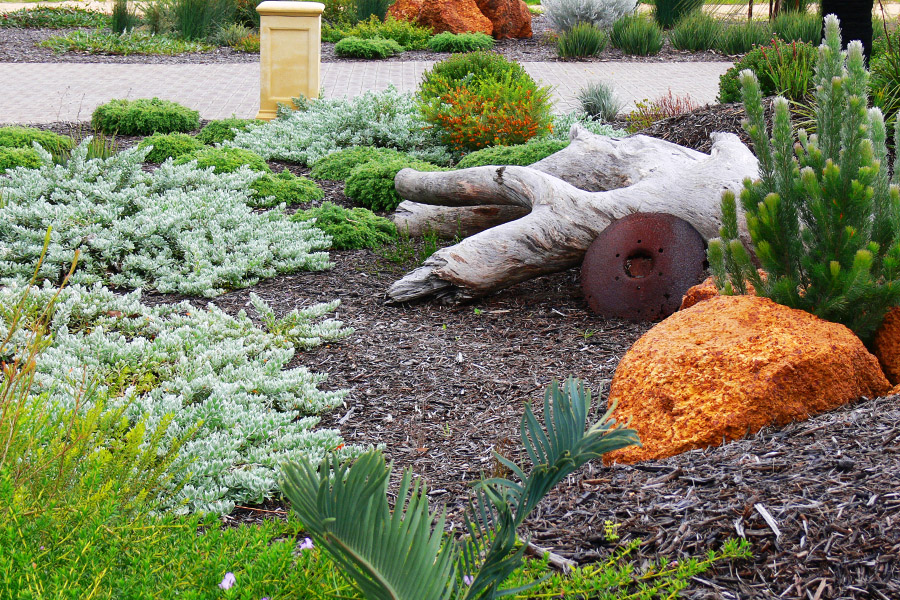Native verge garden installations Perth
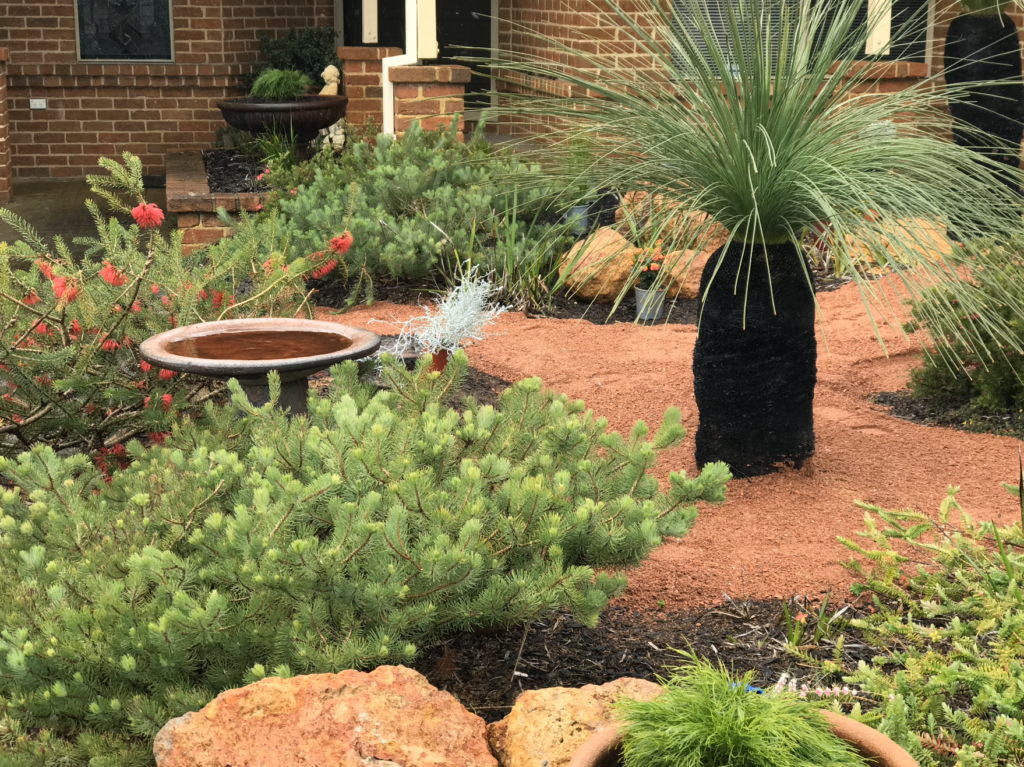
Perth’s drying climate and the amazing array of Western Australian plants now available have made verge gardens more practical than ever before. A verge planted with native ground covers is far more attractive than lawn or synthetic grass and actually becomes an extension of your liveable area and can increase the value of your home. Sustainable Outdoors has been transforming verges since 2004 and can transform the look of your house with an amazing, low maintenance native garden.
What is a Verge Garden?
A verge is the piece of land in front of your house traditionally planted with lawn, A Verge Garden replaces this with native Western Australian plants.
Advantages of a Verge Garden.
A native Verge Garden can offer a range of advantages, including:
- Water conservation: Native WA plants are well-adapted to Perth’s environmental conditions, requiring less water than lawns or non-native species. A surprising statistic is that 60% of household water usage is used outside the home. A native Verge Garden can help conserve our water resources.
- Biodiversity promotion: Native plants attract and support local wildlife, including birds, butterflies, bees, and other beneficial insects. By creating a native Verge Garden, you can contribute to the preservation and enhancement of local biodiversity.
- Reduced maintenance: Once established, native Verge Gardens generally require less maintenance compared to traditional turf or gardens. Native plants are adapted to local conditions, reducing the need for fertilisers, pesticides, and frequent mowing and watering.
- Aesthetically pleasing: Native plants offer a unique and attractive appearance, with a variety of colours, textures, and forms. A well-designed native Verge Garden can enhance the visual appeal of the neighbourhood and create a more natural and inviting environment.
- Noise and air pollution reduction: Dense plantings in a native Verge Garden can act as natural barriers, helping to reduce noise pollution from nearby roads and providing a buffer between pedestrians and vehicles. Additionally, plants absorb carbon dioxide and release oxygen, improving air quality.
- Cost-effective: A native Verge Gardens can be cost-effective in the long run. Once established, they require less watering, mowing, and maintenance, leading to reduced maintenance costs and your time.
- Social Benefits: A verge garden offers social benefits such as community engagement opportunities, street and suburb beautification, improved mental health and well-being, increased social interaction, a sense of ownership and responsibility, neighbourhood identity, and environmental awareness.
Verge Garden ideas and inspiration
These are some of the verges we have installed over the past 15 years.
See More Past Projects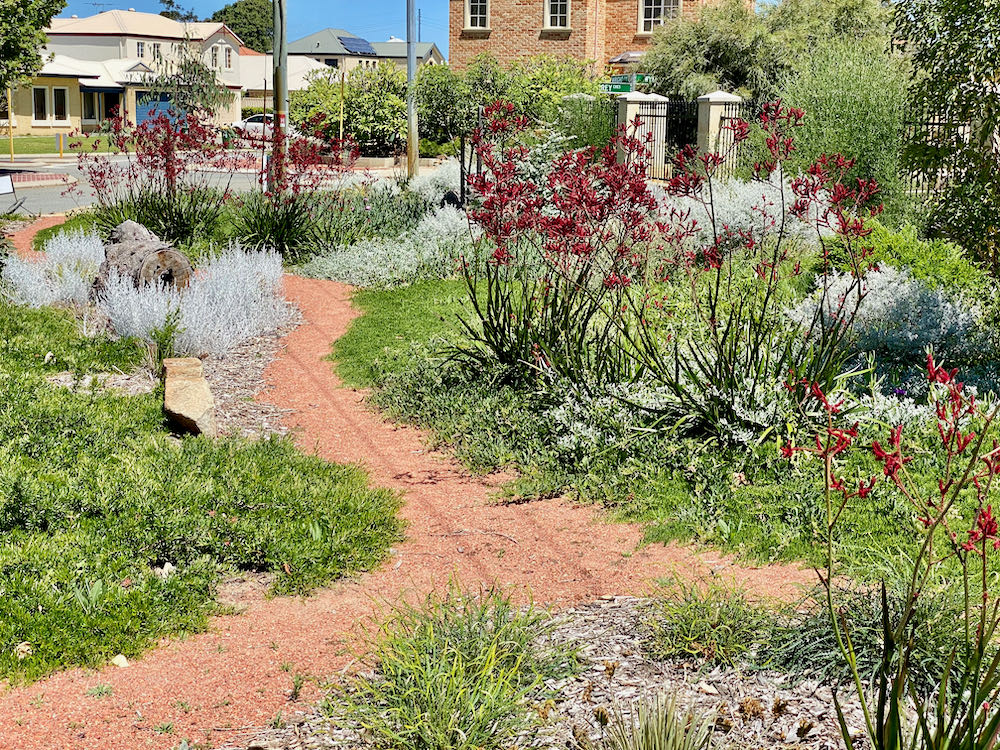
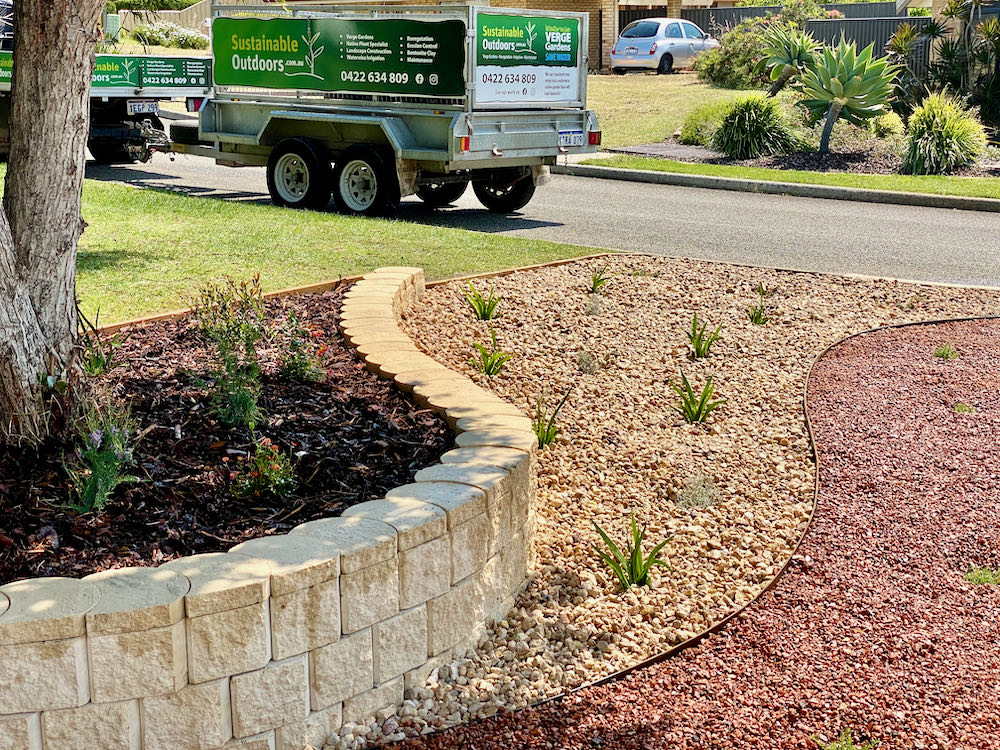
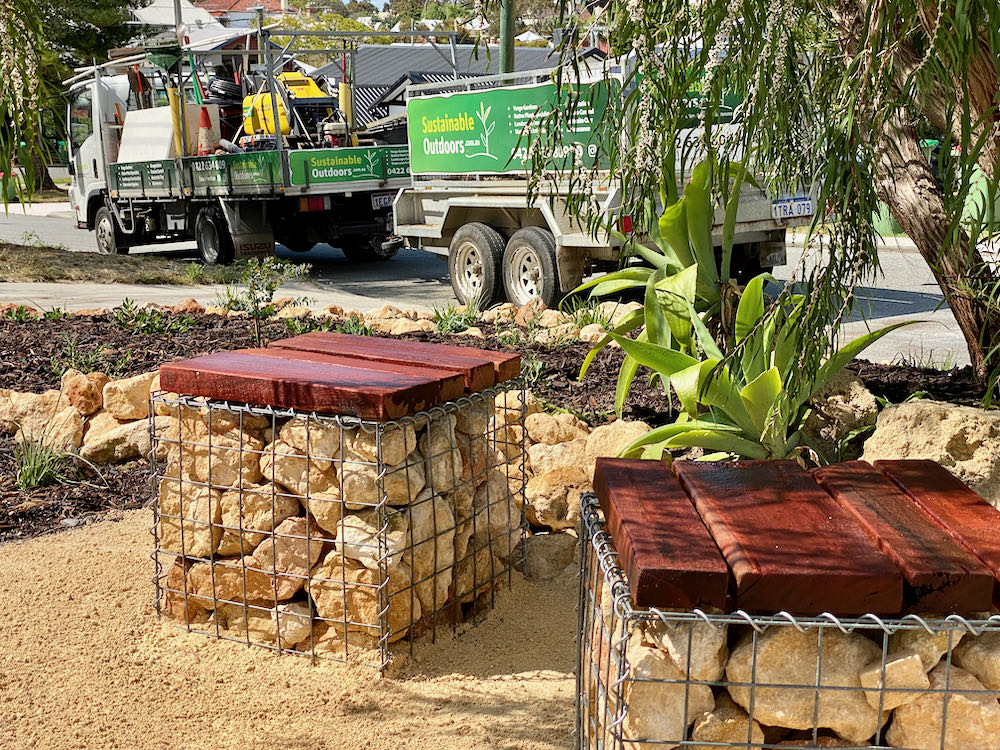
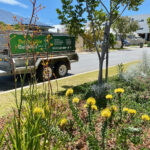
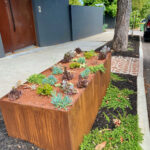
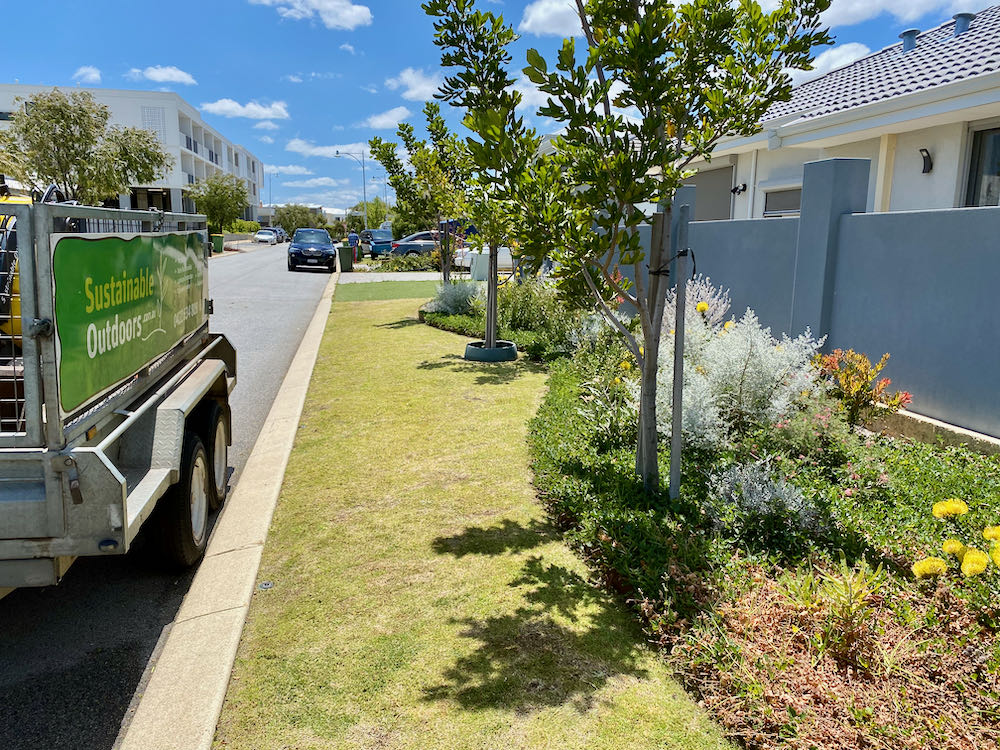
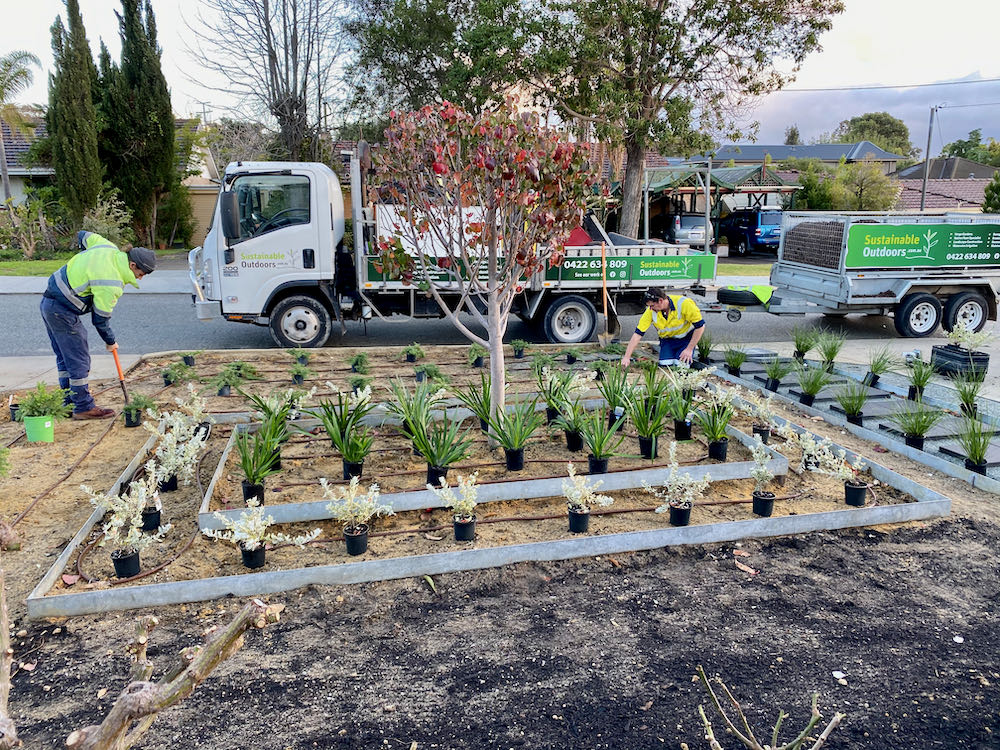
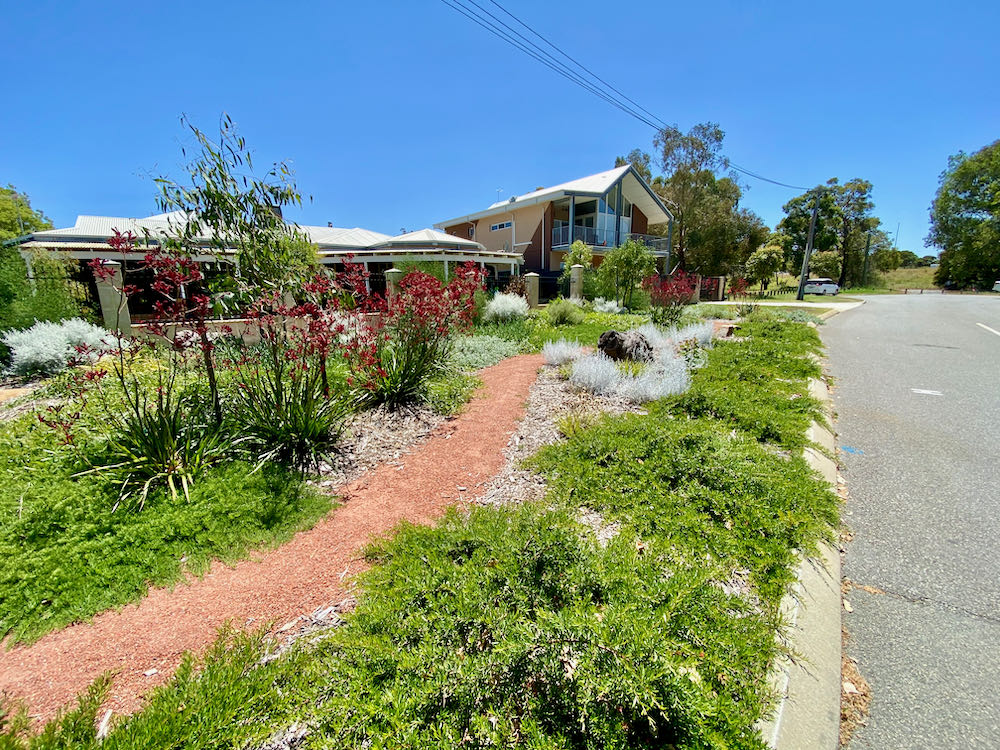
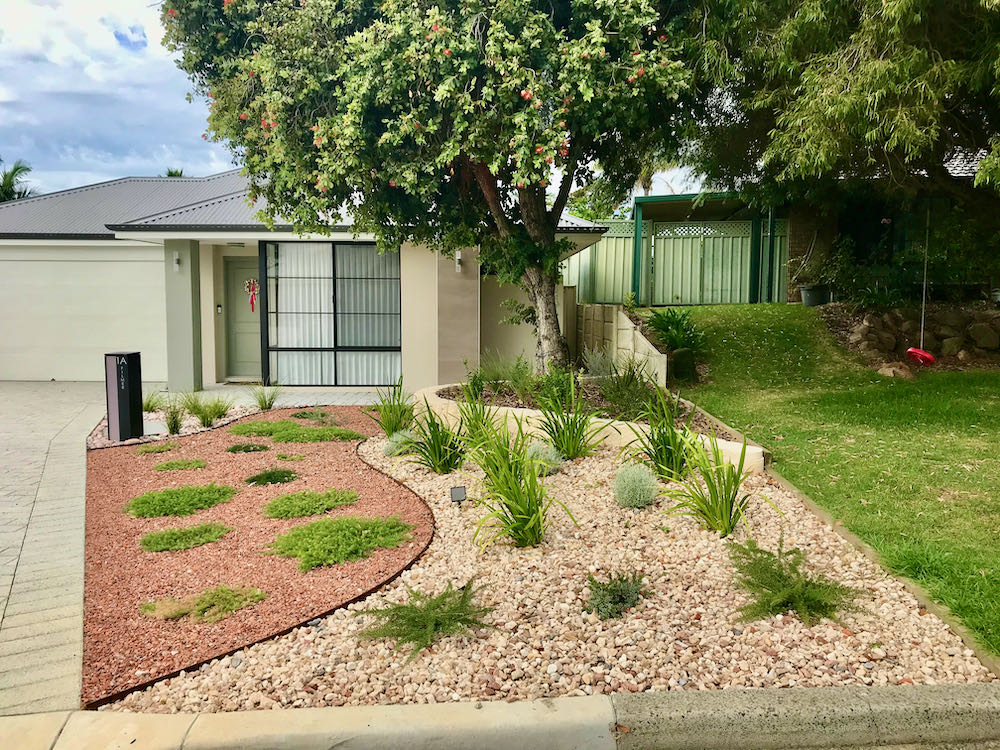
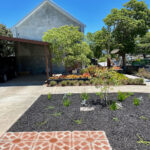
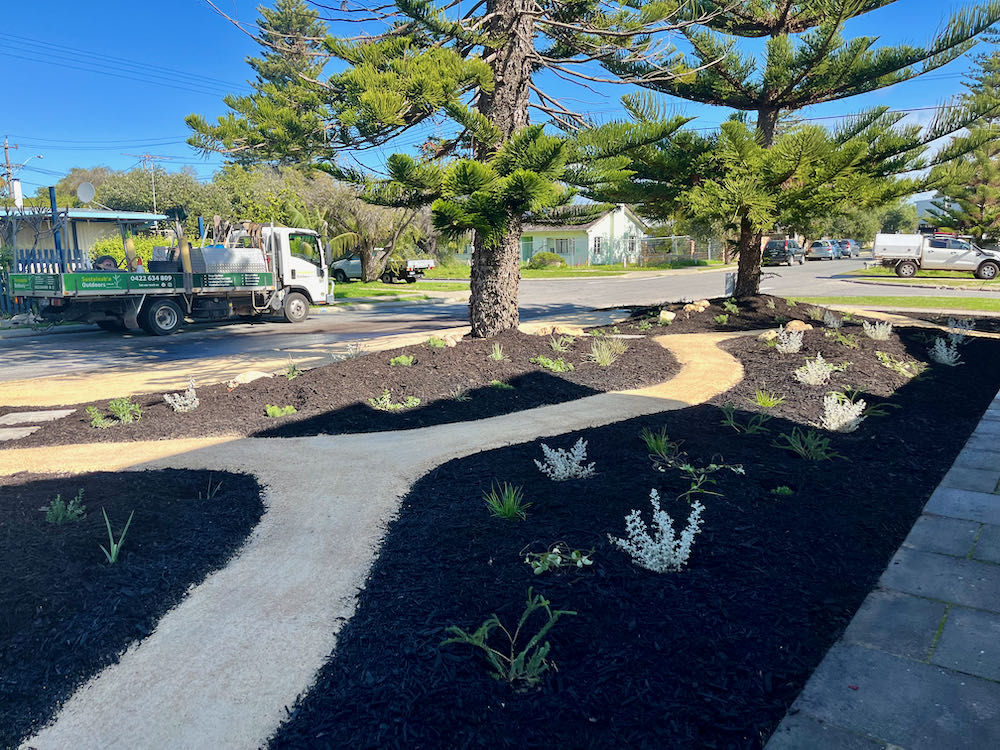
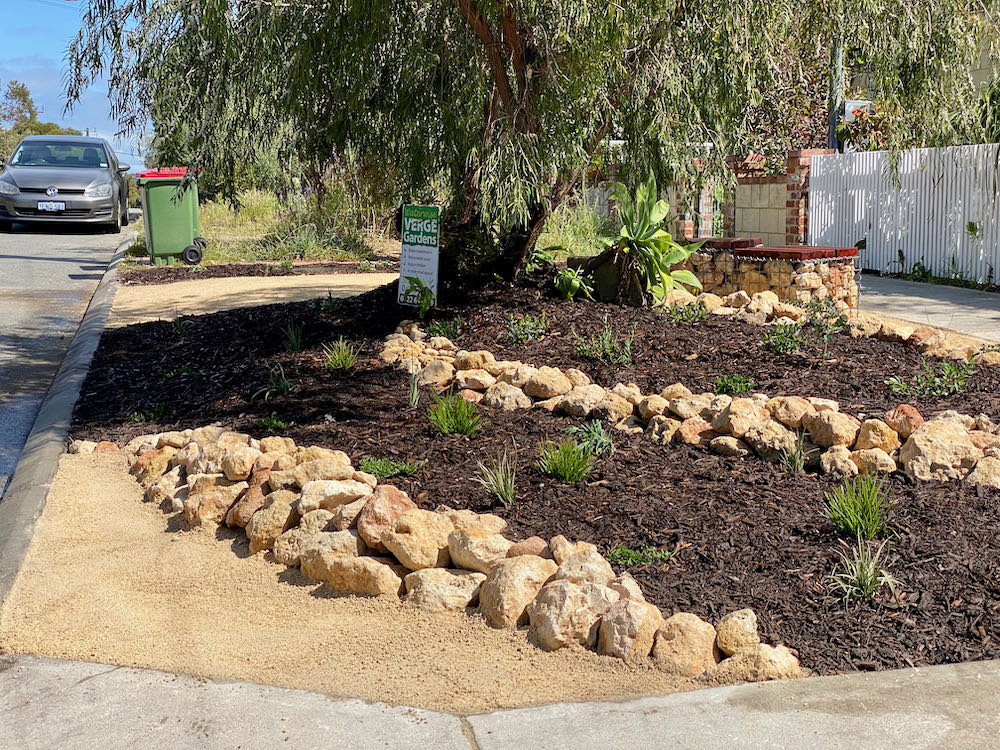
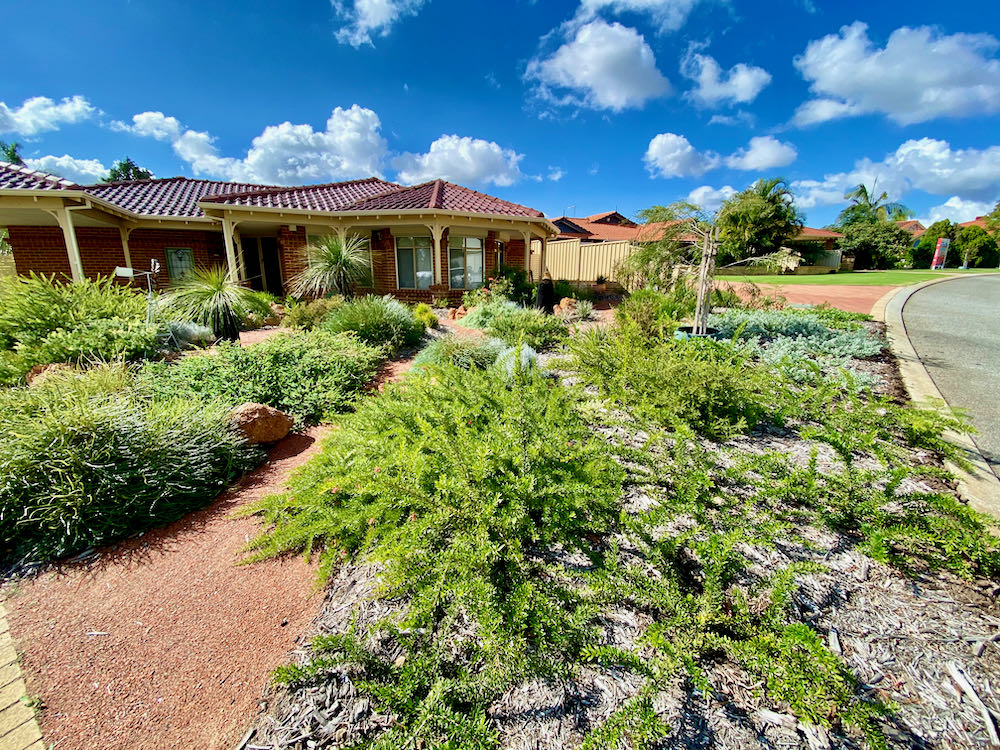
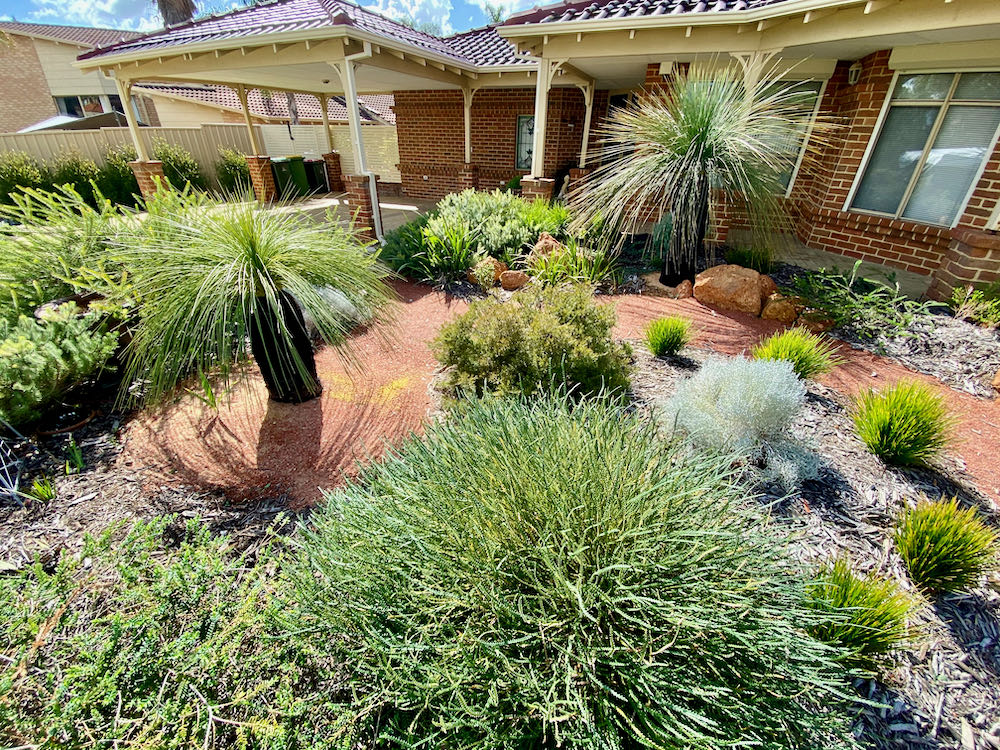
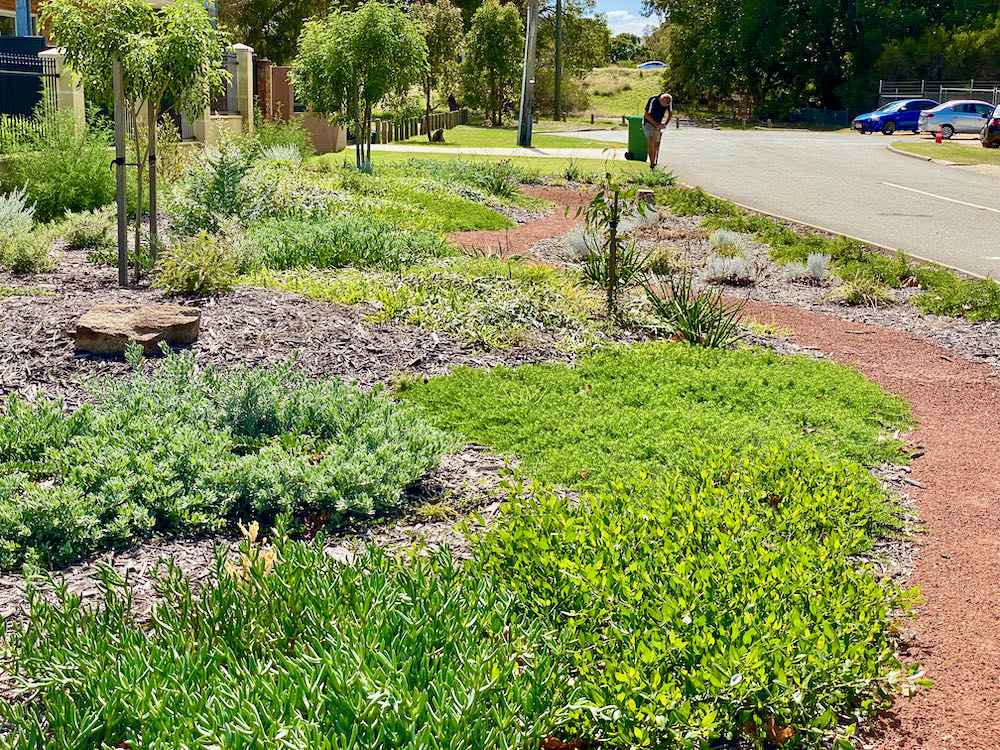
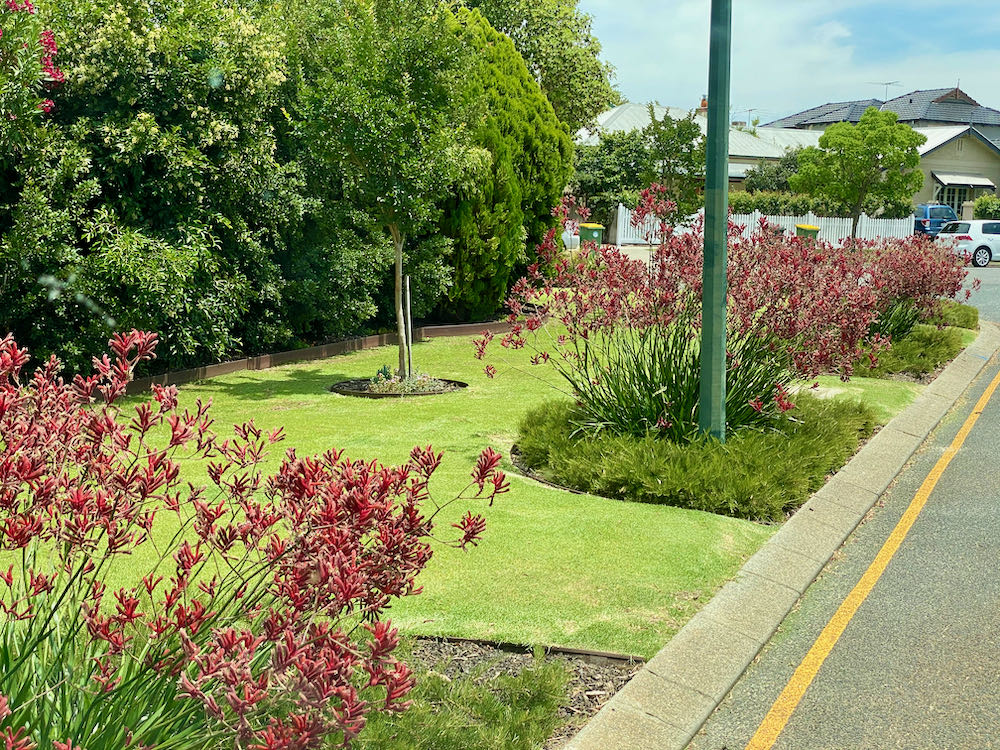
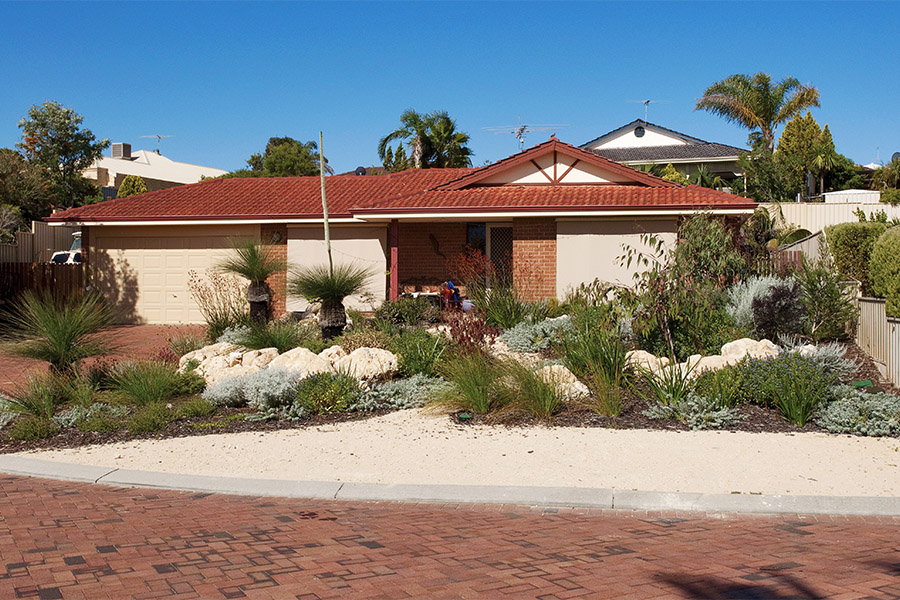
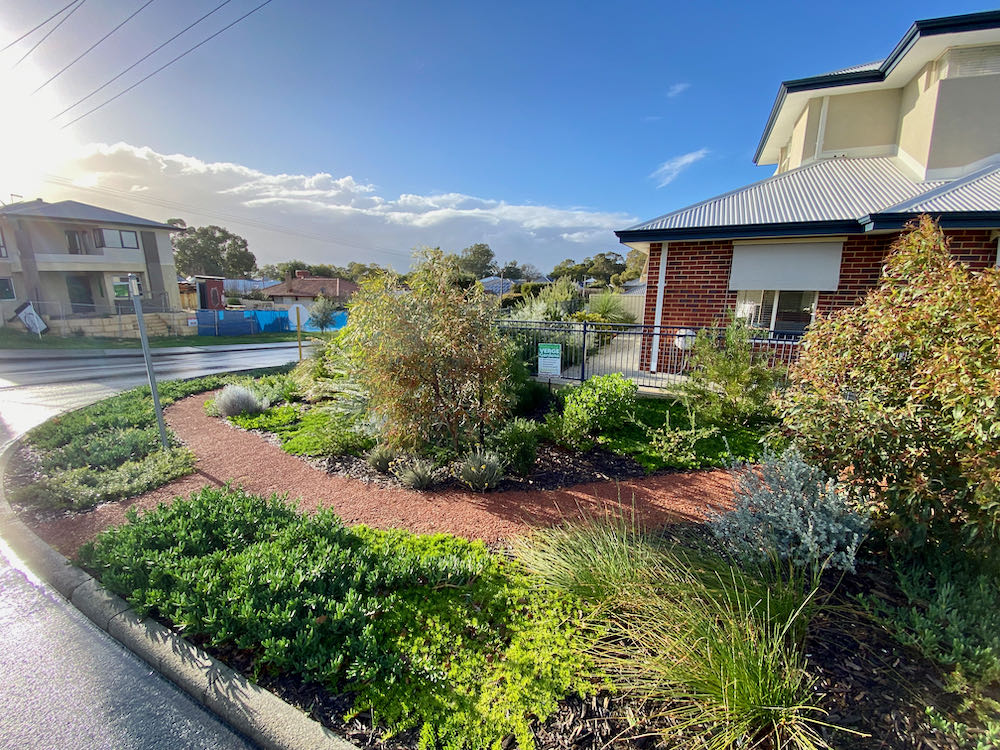
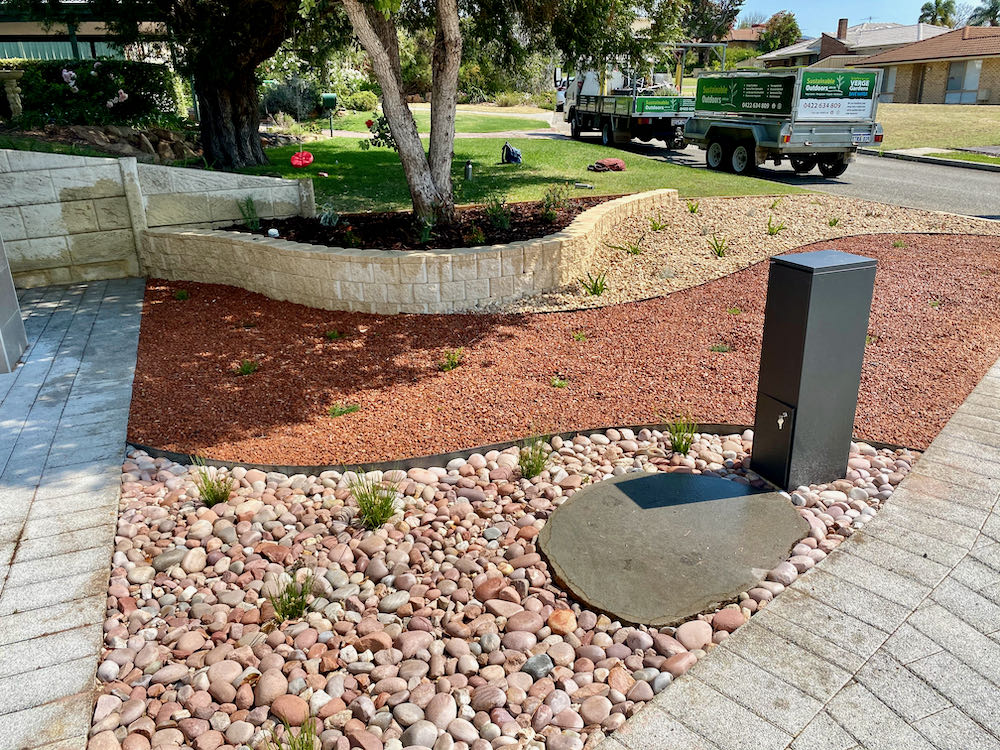

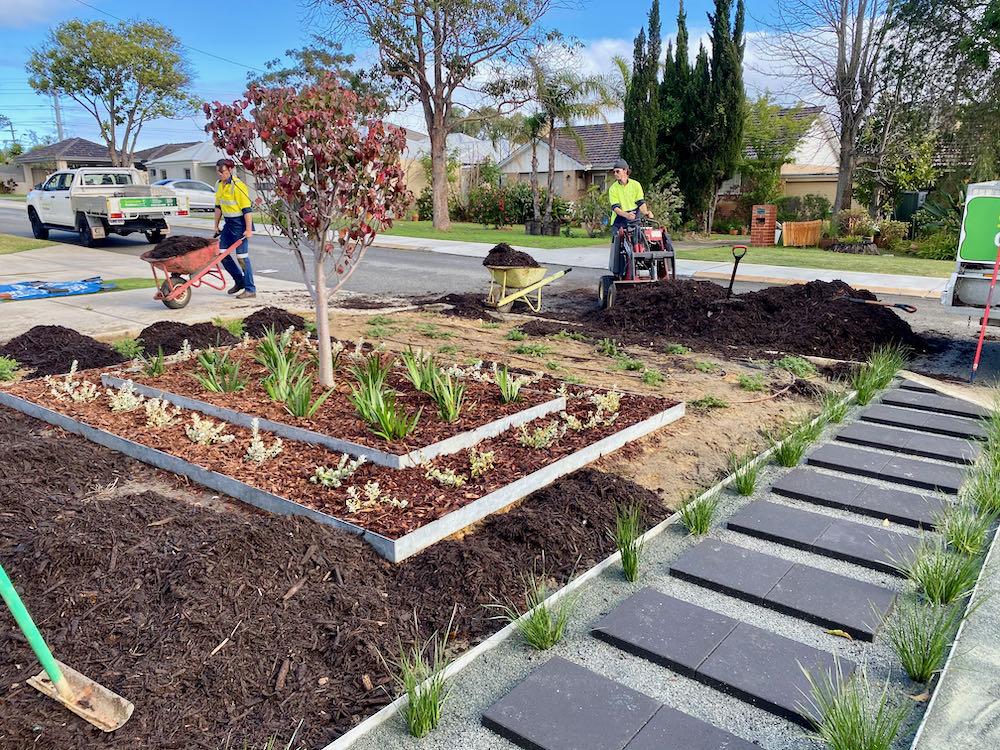
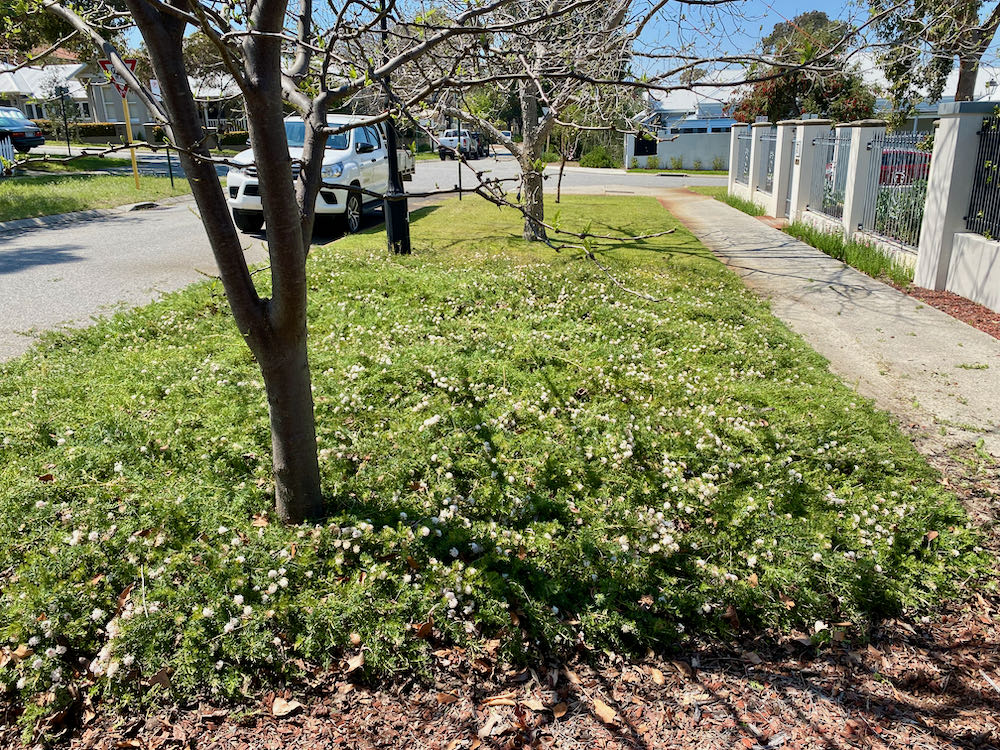
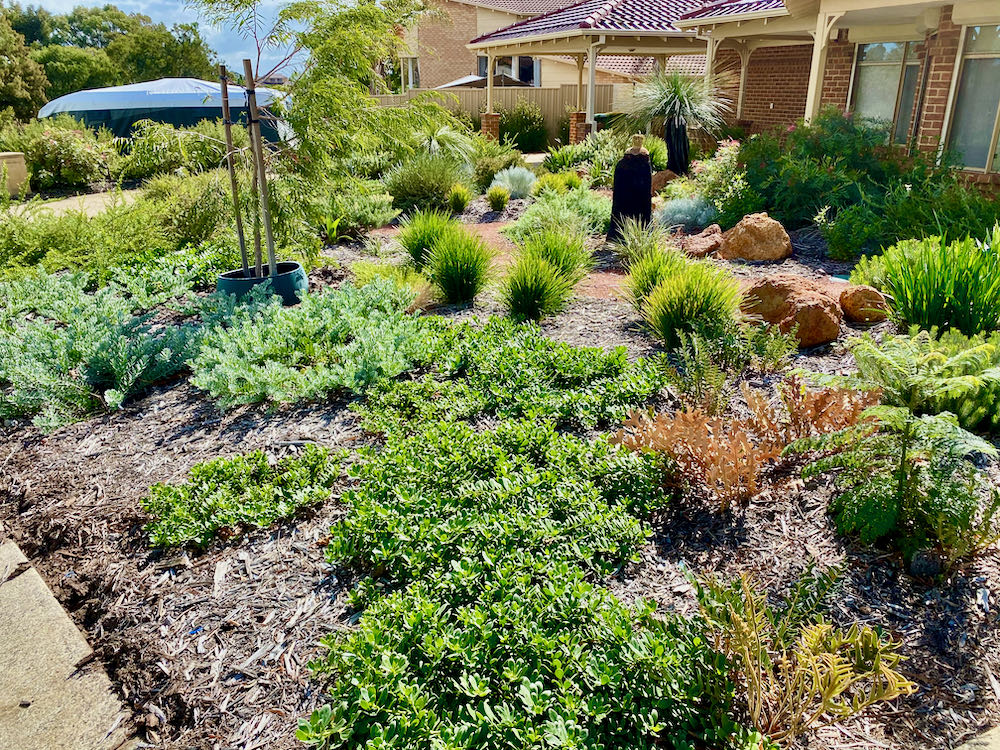

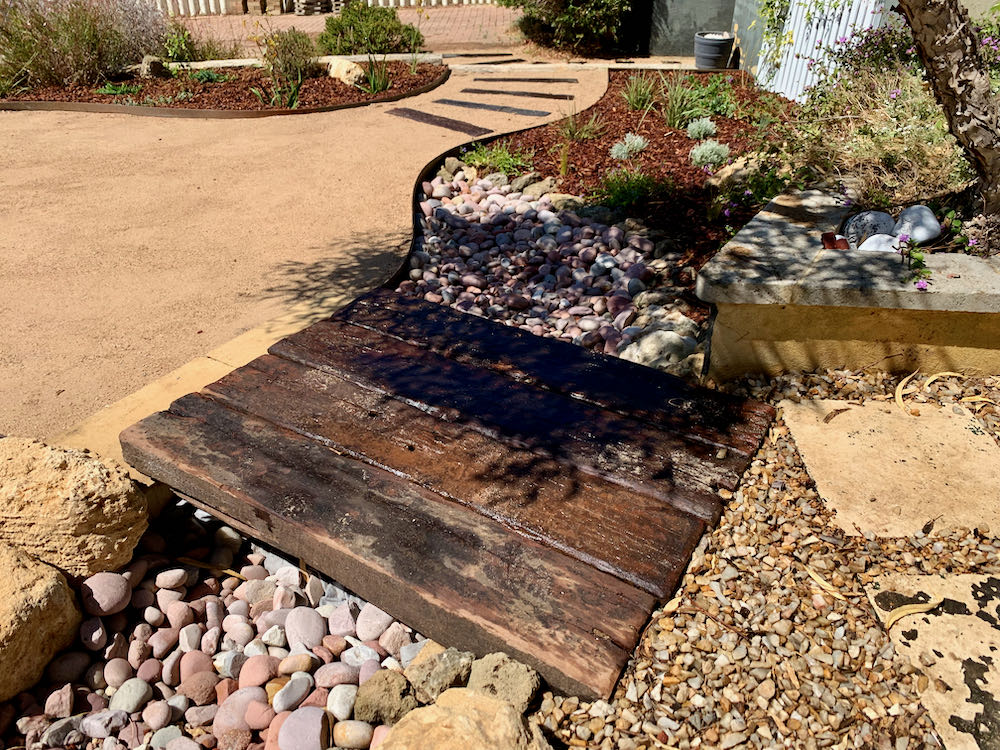
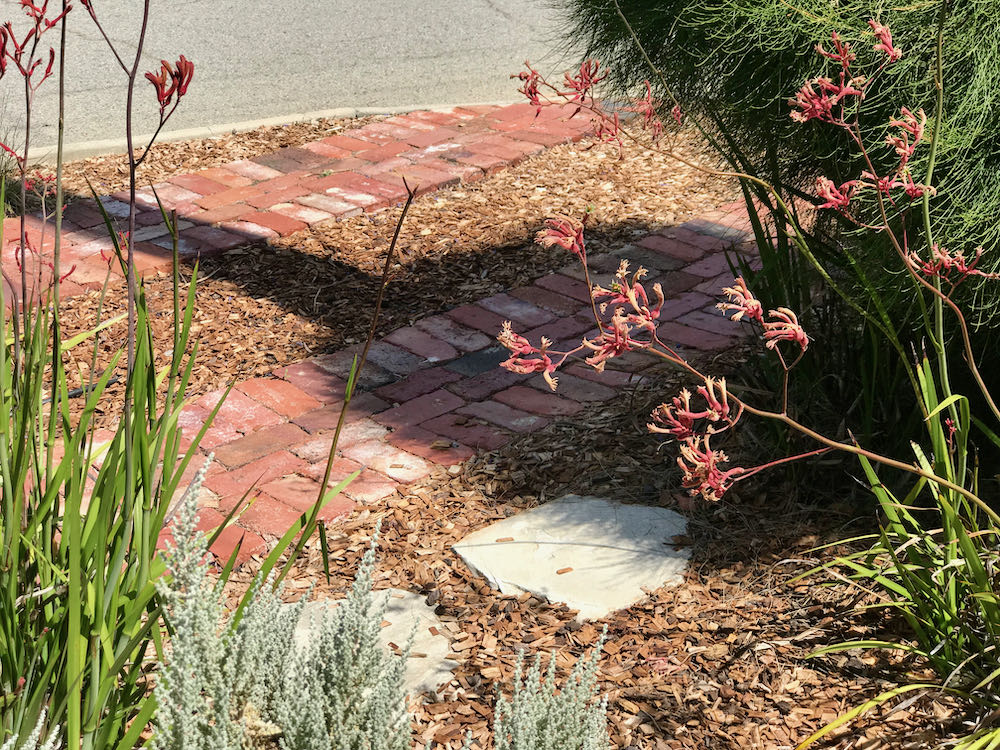
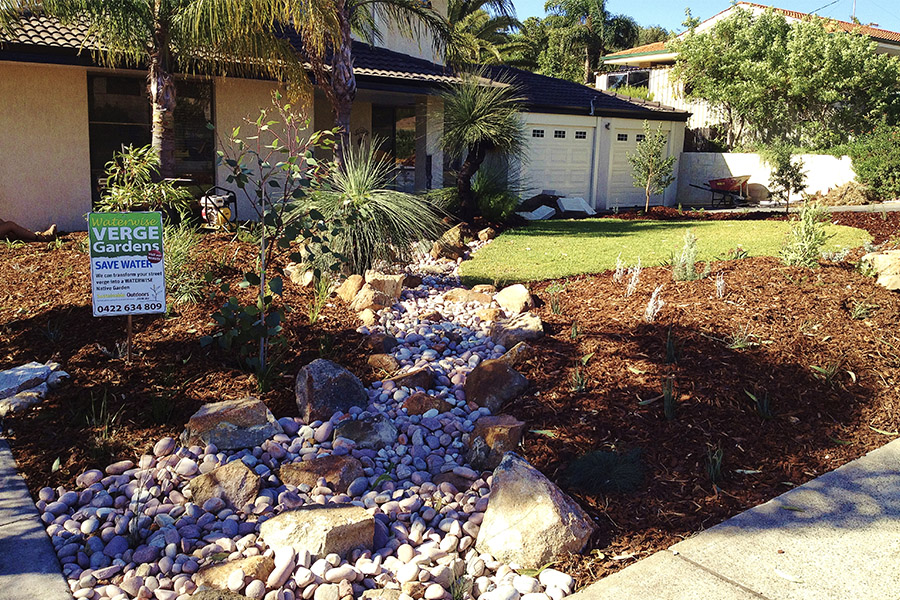
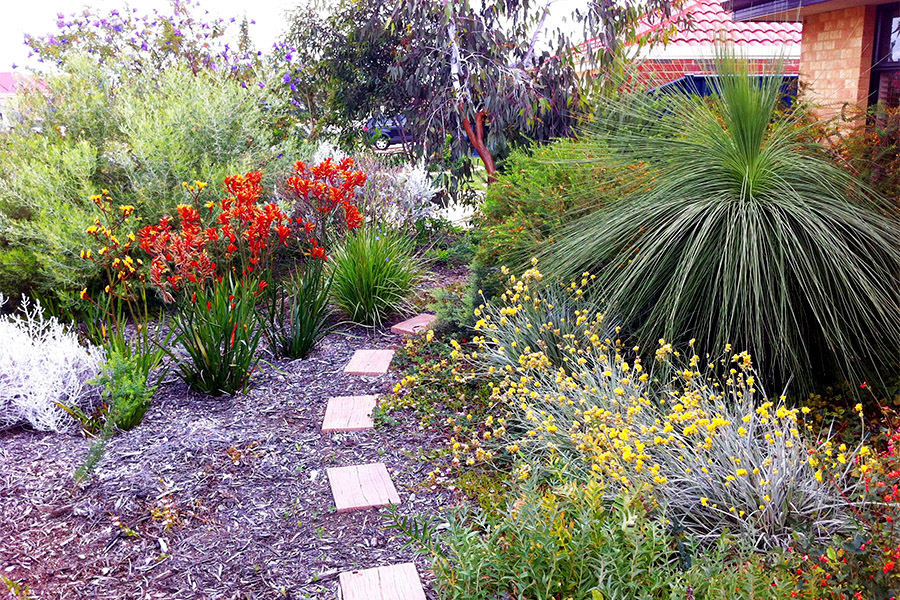
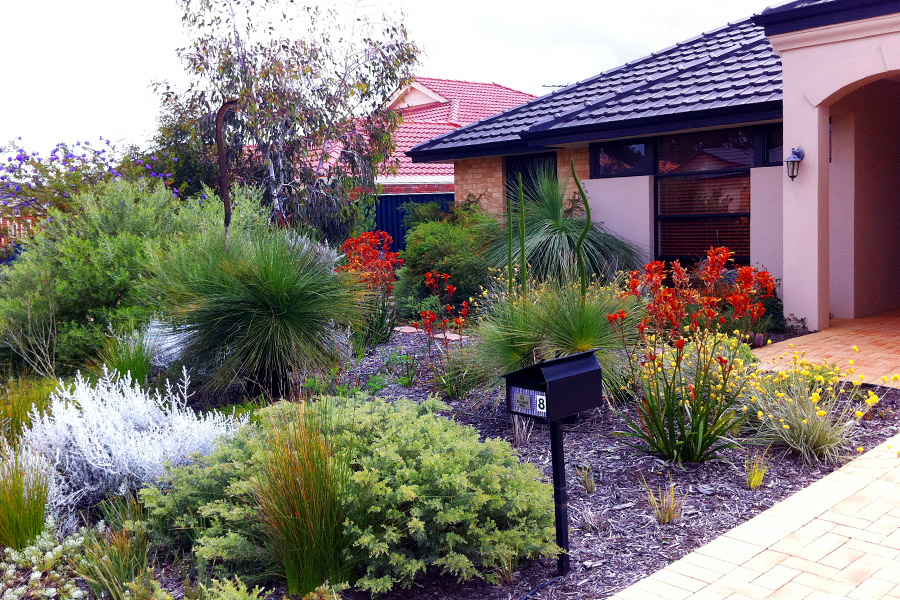
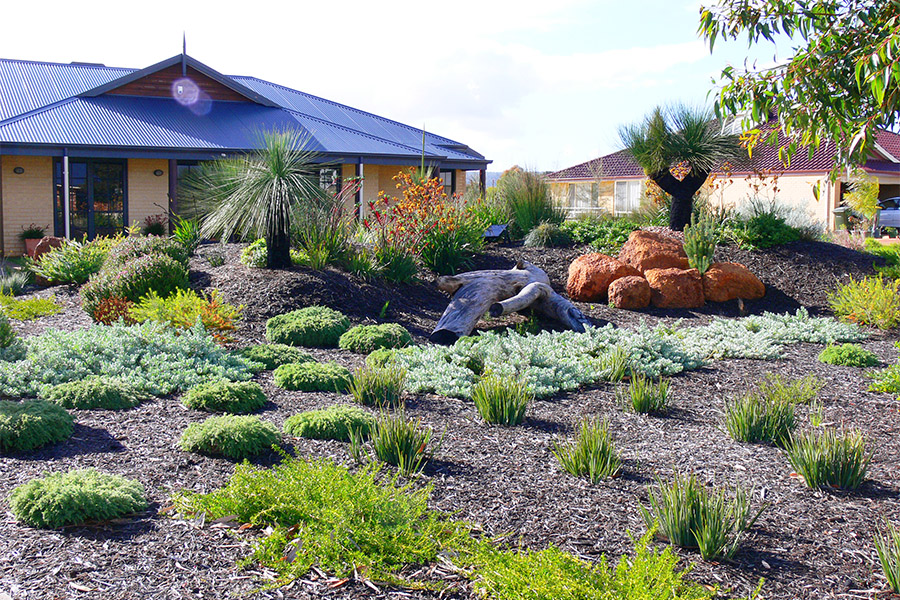
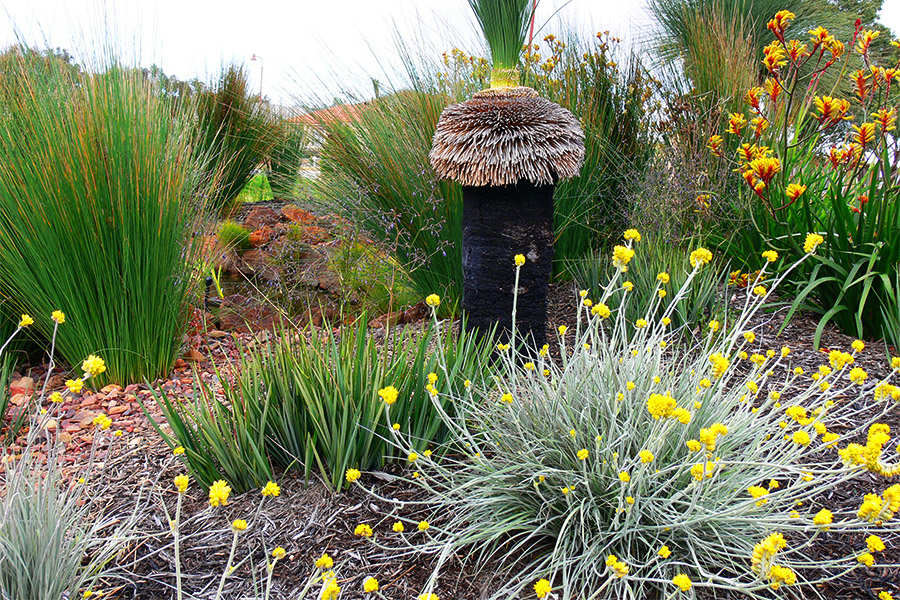

7 Steps to creating a Verge Garden:
- Contact us for a design and quote.
- We’ll spray and remove or rotary hoe the old grass.
- Improve the soil with compost and bentonite clay.
- Retrofit drip irrigation or choose to hand water.
- Mulch using rough, chunky wood chip mulch to a depth of 100mm.
- Plant Waterwise, Western Australian native ground covers.
- Sit back and relax! No mowing on Sunday mornings.
You may also wish to include:
- Fine compacted gravel pathway and or extra parking space
- Stepping stones
- Logs and rocks
- Gabion basket seating
- Contours
- Dry river bed
- Metal and timber edging
- Coloured gravel in place of mulch (fire-wise option)
- Dividing border between neighbours lawn
Want to find out more or get in touch for a quote?
More information about Verge Gardens
- Council RegulationsMany councils now days are encouraging people to transform their verge into native gardens, as they see the benefits of doing so. Regulations vary greatly between councils but generally a height restriction of of 0.5m-0.75m applies for all plants and a set back of the first plant from the kerb to prevent ground covers quickly growing onto the road. Checking your local policy is easy as most council have this available and formal approval is becoming less common across most of Perth.
- PlantsWe recommend mass planting some species for visual impact and continuity by using low ground covers, grasses and small shrubs. Significant species dotted around also adds variety. Obviously Western Australian species are preferred.
- MulchWe prefer to use rough, course and irregular shaped mulches as these last longer, allow the water to permeate through easily and doesn’t blow around. A common mistake is that mulch is meant to hold water, the best mulches actually let water drain through whilst providing an insulating cover over the soil to prevent evaporation. The overall thickness we aim for is 100 mm.
- Soil AmendmentsDepending on the soil type you have, most of Perth is on grey Bassendean sands. From our experience it is absolutely vital to bring your soil to life by adding some organic matter, moisture and nutrient holding minerals and breaking the compaction. We rotary hoe good quality compost and bentonite clay as a minimum into all of our gardens, zeolite can also be used. The compost contains heaps of humus and beneficial bacteria. Bentonite is a type of clay and by adding a small amount of this to sand it will help retain the moisture and prevent water repellency. Zeolite is another natural mineral that acts like a sponge to absorb nutrients, locking them into the soil profile, preventing them from being washed away.
- Removing or leaving the grassThis basically depends on whether the levels are at the right height below the kerb to prevent the mulch from spilling onto the road or driveway. In both cases we would need to spray the grass to be sure it isn’t going to come back. If necessary, we may need to remove the top layer or we can create a small undulations with the excess soil from around the edges which can look quite good. The grass thatching can be mixed in with the soil in some situations without a problem using a rotary hoe, it all adds to the organic matter in the soil.
- Garden FeaturesNow this really brings the garden to life. Grass trees, small pathways, undulations, rocks or logs give the garden something special. Grass trees look good in small groups, they don’t need to be monstrous, small ones look good too, pathways winding around or even across the verge gives it structure, shape and most importantly access to enjoy it. Limestone rocks work great near the coast and coffee rock or granite in the hills. But remember that this must be done in a way that meets the council regulations.
- ReticulationWe recommend installing a drip irrigation system but a verge can also be install without any irrigation at all. Drip irrigation can easily be retro-fitted to an existing sprinkler system or we can install a new system for you. Drip is one of the most efficient systems available, preventing evaporation and runoff as it is installed underneath the mulch layer and can save up to 60% more water than a conventional sprinkler system. It has the added advantage of watering the surface evenly, allowing the plants to spread their roots in search of water and in turn making them stronger on hotter days.
Hand watering is also a viable option for a new verge garden instead of installing irrigation. Hand watering plants to maturity can be very effective in the long term if deep watering is continued for the first Summer. It’s better to deep water less often rather than a little more frequently to encourage deeper root systems.
Be sure to use wetter soil products at least 4 times per year to encourage water infiltration.


